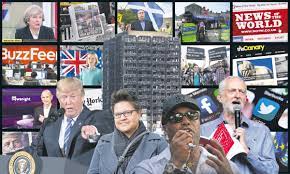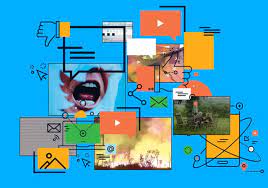The Truth About What You’re Not Being Told By Mainstream Media
The truth is that there’s a lot more going on in the world than what you’re being told by mainstream media. The media has a vested interest in keeping you in the dark about certain things, because if you knew the truth, it would completely undermine their authority and credibility. They want you to believe that they’re the only source of information and that they have your best interests at heart, but the reality is quite different. Here are some of the things that they’re not telling you:
1. The government is much more corrupt than you realize.
2. The economy is on the verge of collapse.
3. The environment is being destroyed at an alarming rate.
4. There’s a lot of suffering in the world that’s not being reported on.
5. Big business and special interests have a lot of control over what happens in government and in society as a whole.
These are just some of the things that mainstream media isn’t telling you, but it’s important that you know them so that you can make informed decisions about your life and your future.
median of data stream
There’s a lot of talk these days about “the median of data streams.” But what is the median of data streams, really?
The median of data streams is simply the value that lies at the midpoint of a distribution of values. It’s the value that would split the distribution into two equal halves if the values were arranged from lowest to highest.
So, for example, if you had a distribution of values that looked like this:
1, 2, 3, 4, 5, 6, 7
The median would be 4, because that’s the value that lies at the midpoint of the distribution.
If you had a distribution that looked like this:
1, 2, 3, 4, 5, 6, 7, 8
The median would be 4.5, because that’s the value that lies at the midpoint of the distribution. (It would be halfway between 4 and 5.)
The median is a very useful measure in statistics because it’s not affected by outliers (values that are far from the rest of the values in the distribution). So if you have a distribution that looks like this:
1, 2, 3, 1000000, 5, 6, 7
The median would still be 4.5 (or halfway between 4 and 5), even though there’s an outlier value of 1000000 in the distribution. The outlier doesn’t change where the median lies.
main stream media lies
The mainstream media is often accused of lying, and for good reason. There are several ways in which the mainstream media lies to the public.

First, the mainstream media cherry-picks stories that fit their narrative. They don’t report on stories that don’t fit their worldview or that might make them look bad. For example, they might only report on positive economic news while ignoring negative news.
Second, the mainstream media spins stories to make them more sensational. They might use loaded language or omit important context in order to create a more dramatic story. This can mislead people into thinking that a situation is more dire or dangerous than it actually is.
Third, the mainstream media relies on anonymous sources. These sources could be making things up or could be misinformed themselves. However, the mainstream media will often report these claims as fact without verifying them. This can lead to false or misleading information being spread.
Fourth, the mainstream media has a bias. This bias can be political, economic, or social. The mainstream media will often present information in a way that favors their bias. For example, they might downplay stories that are critical of their favored political party or focus on stories that make their favored economic system look good.
All of these factors combine to create a situation where the public is not getting the full story from the mainstream media. This can be dangerous as it can lead to people making decisions based on incomplete or inaccurate information.
The media is controlled by a small number of interests.
A small number of interests control the media. This is evident in the way that news is presented and the types of stories that are given coverage. The majority of news outlets are owned by just a handful of companies, which means that there is a limited range of perspectives and voices represented. This can have a significant impact on public opinion, as it shapes what people are exposed to and how they receive information.
The impact of this type of control can be seen in many different ways. For example, certain topics may be downplayed or ignored entirely if they do not fit with the agenda of those who own the media outlets. This can lead to a lack of understanding or knowledge about important issues, as well as a distorted view of reality. It is important to be aware of this phenomenon so that you can make your own informed decisions about what to believe and what to think about the world around you.
These interests dictate what stories are told and how they’re told.
The interests of the media owners are clear. They want to make money and they want to exercise power. These interests dictate what stories are told and how they’re told. The media is used to sell advertising, which funds the operation of the media outlets, and to promote the interests of those who own or control them.
The result is that we get a lot of news that’s designed to sell products or influence our behavior in some way. We also get a lot less news that might be considered “important” but isn’t as marketable. This has always been a concern with regards to the media, but it’s become increasingly apparent in recent years as media consolidation has led to fewer voices and more homogenized content.
The media lies to us about what’s important and what’s not.
The media tells us that we should be worried about the latest celebrity gossip or what new product is on the market, when in reality we should be focusing on more important things. They distract us with meaningless fluff so that we don’t pay attention to the real issues facing our society.
The media is nothing more than a tool to control and manipulate the masses. We need to wake up and start paying attention to what’s really going on in the world around us. Only then can we make a difference.
The media tells us what to think, not what to question.
We are spoon-fed information from a young age, and we are taught to accept it without question. We are told that the media is impartial and objective, but this is far from the truth. The media is biased and often only tells us one side of the story. This can be dangerous, as it means that we are not questioning what we are being told. This can lead to us being misinformed, or even worse – believing false information.
It’s important to always question the information you’re given, no matter where it comes from. Just because something is in the news doesn’t make it true. Always do your own research, and don’t be afraid to question what you see and hear.
We need to be critical of the information we’re given by the media.
In today’s society, it’s important to be critical of the information we’re given by the media. With the 24-hour news cycle and the rise of social media, we’re constantly bombarded with information, much of which is biased or inaccurate. It’s up to us to sort through this information and determine what is true and what is not. This can be a difficult task, but it’s crucial if we want to make informed decisions about the world around us.
